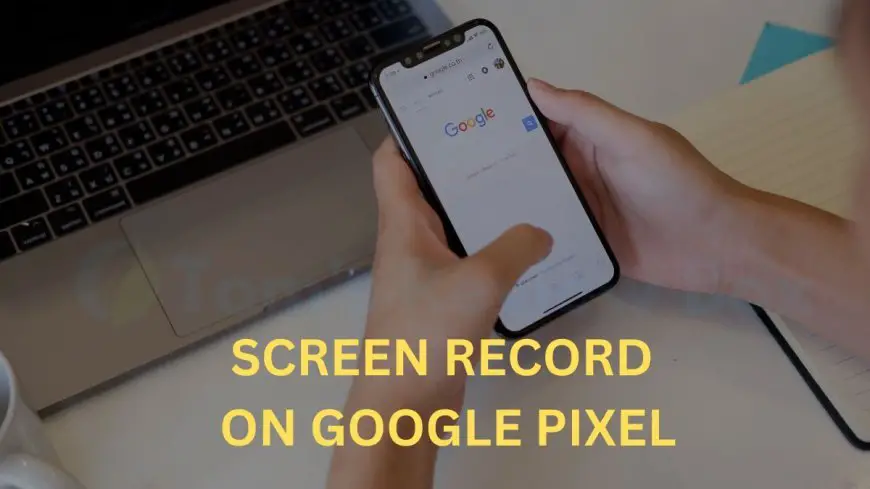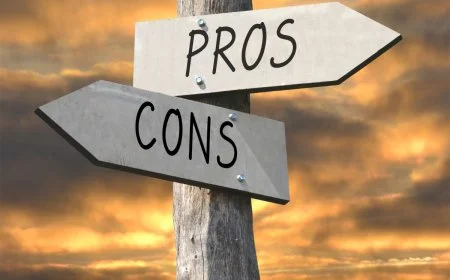Record Like a Pro: Top Tips and Tricks for Screen Recording on Your Google Pixel
Learn how to screen record on Google Pixel easily with our ultimate guide. Step-by-step instructions for recording your device's screen.

Did you know that 57% of smartphone users have no idea how to screen record on their devices or use a recorder app for screenshots? Let me guide you through the simple steps to screen record on your Google Pixel smartphone effortlessly using the recorder app. First, locate the Quick Settings panel and tap "Screen Record" to start capturing your screen activity. Whether it's a tutorial, gameplay, or video call, recording has never been easier. You can even customize settings like audio source and resolution for a personalized experience. With this handy feature, sharing content or saving important moments with the quick settings panel, screenshot, or screen recorder is just a few taps away.
Key Takeaways
- Screen recording on Google Pixel can be a valuable tool for various purposes.
- Preparing your device and selecting the right settings are crucial steps before starting a screen recording.
- Following a step-by-step guide can help you navigate the screen recording process smoothly.
- Accessing and managing your recordings efficiently ensures easy retrieval and sharing.
- Sharing screenshots and screen captures with others can enhance collaboration and communication.
- Editing recordings can help you refine your content and make it more engaging.
Why Screen Recording Matters
Enhances Communication
Screen recording is a powerful tool that allows users to visually demonstrate tasks or issues, making communication more effective. By capturing on-screen actions, individuals can record and provide clear and concise instructions, eliminating any room for misinterpretation. This feature is particularly beneficial in educational settings, where complex concepts can be easily explained through visual demonstrations.
Utilizing screen recording enhances the overall quality of communication by providing a visual aid that complements verbal explanations. Whether it's a tutorial video, a software demonstration, or troubleshooting guide, the ability to capture on-screen activities and record engages the audience and ensures better understanding. Moreover, screen recording serves as a valuable resource for creating training materials or documenting processes for future reference.
Facilitates Remote Collaboration
In today's digital age, remote collaboration has become increasingly common, and screen recording plays a crucial role in this aspect. By sharing real-time screen activities with team members or clients, individuals can effectively collaborate on projects regardless of their physical location. This real-time sharing fosters seamless communication and allows for instant feedback, promoting efficiency and productivity in virtual teamwork.
Personally, I have found screen recording to be invaluable in my remote work setup. Being able to record my screen during virtual meetings or presentations helps me convey ideas more clearly and ensures that all participants are on the same page. Sharing recorded screens has enabled me to provide detailed feedback to colleagues without the need for lengthy written explanations.
Enables Efficient Troubleshooting
One of the key benefits of screen recording is its ability to capture technical problems as they occur, facilitating efficient troubleshooting processes. When encountering software bugs or glitches, users can record their screen to document the issue accurately. This recorded evidence captured by a screen recorder can then be shared with technical support teams or online forums for quicker and more effective resolution.
The ability to capture screen recordings during troubleshooting sessions not only saves time but also enhances the accuracy of issue reporting. Instead of relying solely on verbal descriptions of problems, users can show support technicians exactly what they are experiencing on their screens. This visual aid streamlines the diagnostic process and leads to faster problem-solving outcomes.
Preparing to Record Your Screen
Enable Screen Recording Feature
To screen record on Google Pixel, make sure your device has the screen recording feature enabled. This can usually be found in the Quick Settings menu.
I always double-check this setting before I start recording, as it ensures a smooth process without any interruptions.
Access Quick Settings Menu
Familiarize yourself with the Quick Settings menu on your Google Pixel for easy access to the screen recording feature.
Quick tip: I find it helpful to rearrange my Quick Settings tiles so that the screen recording option is easily accessible.
Check Storage Space Availability
Before you begin screen recording on your Google Pixel, verify the available storage space on your device.
Personal experience: Once, I forgot to check my storage space and ended up not being able to save an important recording.
Step-by-Step Screen Recording
Accessing Screen Recording
To begin screen recording on Google Pixel, swipe down from the top of your screen to reveal the quick settings panel.
I always find this step convenient as it provides easy access to essential features like screen recording without navigating through multiple menus.
Customizing Recording Settings
Once you have accessed the quick settings panel, tap on the Screen Record icon to customize your recording preferences.
Adjust settings such as including audio from the microphone and choosing the desired screen area to capture.
Initiating the Recording
After configuring your preferred settings, tap on the Start button to commence the screen recording process.
I often ensure that I have selected the correct audio source and screen area before starting my recording session.
Accessing Your Recordings
Locate
To access your screen recordings on Google Pixel, navigate to the designated storage location on your device. Look for a folder named "Screen Recordings" or "Recordings."
I usually find my recordings stored in the "Movies" or "Gallery" folder, depending on the app used for recording.
Organize
Utilize the file manager app on your Google Pixel to efficiently organize and manage your recorded videos. Create folders based on categories like work, personal, or entertainment.
By organizing your recordings, you can easily locate specific videos when needed without scrolling through a cluttered list.
Share
Share your screen recordings with others seamlessly by using various platforms such as messaging apps, social media, or email. Simply select the recording you want to share and choose the preferred platform.
I often share my tutorials with friends through messaging apps to get their feedback and suggestions for improvement.
Sharing Your Screen Captures
Instant Sharing
Utilize messaging apps like WhatsApp or Telegram to instantly share your screen recordings with friends and colleagues. Simply select the recording and send it directly through these platforms for quick and efficient sharing.
Uploading to Cloud Storage
Cloud Storage Services
Upload your screen recordings to popular cloud storage services such as Google Drive or Dropbox. This ensures easy access to your recordings from any device and allows you to share them with others by simply sending a link.
Sharing in Presentations
Presentation Showcases
Showcase your screen captures during presentations or online tutorials to provide visual demonstrations. Enhance your explanations by incorporating recorded videos into your presentations, making them more engaging and informative for your audience.
Personal Insight: I find that utilizing messaging apps for instant sharing is incredibly convenient, especially when I need quick feedback on a project from my team members.
Thoughts on Cloud Storage: Uploading recordings to cloud storage not only saves space on my device but also provides a secure backup option in case of any unexpected data loss.
Incorporating Screen Captures: When creating online tutorials, I often include screen captures to visually guide my viewers through each step, making the learning process more interactive and effective.
Editing Your Recordings
Trimming Content
To focus on essential information, trim unnecessary parts from your recordings using editing tools. Remove any irrelevant segments.
When editing, consider the flow of your video. Ensure that it is coherent and engaging for viewers to follow along.
Experiment with different editing techniques to create a polished final product. Add transitions between scenes for a seamless viewing experience.
Adding Annotations
Enhance the clarity of your recordings by adding annotations or captions. Highlight key points within the video to guide viewers.
Annotations can provide additional context or explanations for complex topics discussed in your screen recordings.
Personal tip: I find that adding brief text annotations helps reinforce important details and keeps viewers engaged throughout the video.
Utilizing Editing Tools
Explore various editing tools available for Google Pixel to enhance the visual appeal of your recordings. Experiment with effects and filters to make your videos more dynamic.
Different editing tools offer unique features such as text overlays, stickers, and filters that can elevate the quality of your screen recordings.
I often use editing tools to adjust colors and brightness levels to ensure my recordings look professional and visually appealing.
Tips for Better Screen Recording
Lighting Conditions
Good lighting is essential for high-quality screen recordings. Ensure good lighting conditions to improve the overall video quality and make your content more engaging. Natural light or soft artificial light can significantly enhance the clarity of your recordings.
To achieve optimal lighting, position yourself facing the light source. This will prevent shadows from obscuring the screen and ensure a clear view of the content being recorded. Avoid harsh overhead lighting that can create glare on the screen.
Stability Matters
To avoid shaky recordings that can be distracting to viewers, use a stable surface or tripod when recording your screen. A steady setup will result in smoother footage and provide a more professional look to your videos. Consider investing in a smartphone tripod for added stability.
When setting up your recording space, choose a location with minimal vibrations to further reduce any potential shaking during the recording process. Securing your device on a stable surface will also help maintain focus on the content being showcased.
Optimize Audio Settings
In addition to visual clarity, optimize your audio settings to ensure clear sound quality during screen captures. Adjust microphone sensitivity levels to avoid background noise interference and enhance the overall audio experience for your audience. Using an external microphone can also significantly improve sound quality.
For better audio results, test different microphone placements to find the optimal position for capturing clear sound without distortion. Make sure to speak clearly and at an appropriate volume during recordings to maintain audio quality throughout the video.
Troubleshooting Common Issues
Software Updates
Ensuring your Google Pixel device is up to date with the latest software releases can prevent screen recording glitches. Regularly check for updates in the settings menu to maintain optimal performance.
etimes, outdated software can cause compatibility issues with screen recording apps. By keeping your device updated, you ensure a seamless recording experience without any technical hitches.
Restart Device
If you encounter freezing or lagging problems during screen recording, a simple solution is to restart your Google Pixel device. This action can help clear temporary system errors that may be affecting the recording process.
I find that restarting my device before initiating a screen recording session often resolves any performance issues I may be facing. It's a quick and effective way to ensure smooth and uninterrupted recordings.
Clear Cache and Storage
To free up memory space and optimize your Google Pixel for smoother screen recording operations, it's essential to regularly clear cache and storage. This action helps remove unnecessary files that could be hindering the recording process.
Clearing cache and storage not only enhances the overall performance of your device but also ensures that there is ample space available for high-quality screen recordings. I make it a habit to clear cache and storage before each recording session for optimal results.
Expanding Your Skills
Advanced Features
Enhance your screen recording capabilities by exploring advanced features available in third-party apps. These apps offer a wide range of tools to improve your recording experience. Experiment with different settings to find the ones that suit your needs best.
I have found that using third-party apps can significantly boost the quality of my screen recordings. They provide additional options such as adjustable frame rates and video resolutions, allowing for more customized recordings.
Live Streaming
Dive into the world of live streaming while screen recording to add an interactive element to your videos. This feature enables you to share your screen in real-time with your audience, making it perfect for tutorials or gaming content.
Personally, I enjoy live streaming as it allows me to engage with my viewers instantly and receive feedback in real-time. It creates a sense of community and connection that enhances the overall viewing experience.
Recording Scenarios
Challenge yourself by experimenting with various recording scenarios to broaden your skills. Try capturing different types of content, such as gameplay footage, app demonstrations, or online meetings. This diversity will help you become proficient in handling various recording situations.
In my experience, trying out different recording scenarios has been instrumental in improving my screen recording abilities. It has helped me understand the nuances of each type of content and adapt my recording techniques accordingly.
Final Remarks
Screen recording on Google Pixel is a powerful tool that can enhance your digital experience. By following the steps outlined in this guide, you can easily capture and share important moments on your device. Remember to utilize the tips provided for better results and troubleshoot any issues that may arise. Editing your recordings can further personalize your content, making it more engaging for your audience. As you expand your skills in screen recording, you'll discover new ways to leverage this feature for both personal and professional use.
Start screen recording on your Google Pixel today and unlock a world of possibilities at your fingertips!
Frequently Asked Questions
How important is screen recording in today's digital world?
Screen recording is essential for creating tutorials, sharing gameplay, or troubleshooting tech issues. It allows you to visually guide others through processes, enhancing communication and understanding.
What are the basic steps to prepare for a screen recording session?
Before starting a screen recording, ensure your device has enough storage space, close unnecessary apps to optimize performance, and familiarize yourself with the screen recording tool on your Google Pixel.
How can I access my recorded screen captures after finishing a recording?
Once you've completed a screen recording on your Google Pixel, you can usually find the recordings in the gallery or file manager app on your device. They are typically saved as video files for easy access.
Is it possible to edit my screen recordings for better quality?
Yes, you can enhance your screen recordings by editing them. Trim unnecessary parts, add annotations or captions for clarity, adjust audio levels, and apply filters to make your recordings more engaging and professional.
What are some common issues that may arise during screen recording and how can they be resolved?
Common issues like low-quality recordings, audio problems, or app crashes can be frustrating but often have simple solutions. Check your device settings, update the recording app if needed, and ensure good lighting and sound conditions for optimal results.
What's Your Reaction?







































![MacBook Pro M5: All the features and specs you need to know [LEAKS REVEALED]](https://tomsreviewbox.com/uploads/images/202502/image_430x256_67bd6d7cd7562.jpg)



























